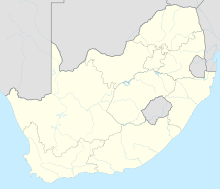History
In 1937, aided by a magnetometer, Dr Rudolf Krahmann discovered vast gold deposits of the West Wits Line near Carletonville South Africa, including those developed as the Driefontein and Kloof (later KDC) mines.
In 1999, Gold Fields acquired Driefontein through the purchase AGA's 21.5% shareholding, then making Gold Fields the world's second largest gold producer. Gold Fields Ltd held full interest in GFI Mining South Africa (Proprietary) Limited which fully owned Driefontein.
On 30 August 2005, Driefontein officially poured its 100 millionth ounce of gold.
In 2006, Driefontein successfully converted its "old order mining licence"to new order MR" and its 9 Shaft completion project was approved. [2]
In 2012, Gold Fields Limited unbundled its subsidiary, GFI Mining South Africa Proprietary Limited ("GFIMSA"), which was then renamed Sibanye Gold Limited ("Sibanye Gold"), [later Sibanye-Stillwater], and consisted of the KDC (formerly Kloof) and Beatrix mines, as well as an array of support service entities in South Africa. [3]
This page is based on this
Wikipedia article Text is available under the
CC BY-SA 4.0 license; additional terms may apply.
Images, videos and audio are available under their respective licenses.

